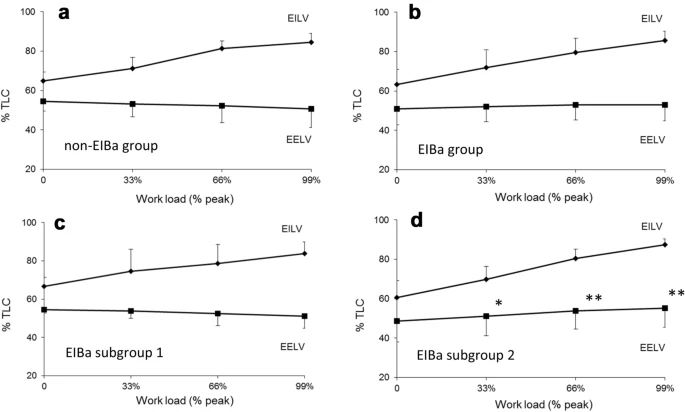Research – Open Access
Maroon Salameh, Laura Pini, Federico Quadri, Fabio Spreafico, Damiano Bottone & Claudio Tantucci
Allergy, Asthma & Clinical Immunology volume 17, Article number: 84 (2021)
Abstract
Background
Physical effort is capable of triggering airway obstruction in asthmatics, the so-called exercise-induced bronchoconstriction in asthma (EIBa). This study was performed in subjects with mild persistent asthma, aiming to find predictors for developing EIBa.
Methods
In 20 subjects with mild asthma, measurements of baseline functional respiratory parameters and airways responsiveness by a methacholine challenge were obtained on the first day. A maximal, symptom-limited incremental cardiopulmonary exercise test (CPExT) was performed the day after, with subsequent, repeated maneuvers of maximal full forced expiration to monitor the FEV1 change at 1,3,5,7,10 and 15 min after the end of the exercise.
Results
19 subjects completed the two-days protocol. No functional parameters both at rest and during effort were useful to predict EIBa after stopping exercise. In asthmatics with EIBa, mean Inspiratory Capacity (IC) did not increase with increasing ventilatory requirements during CPExT because 6 of them (50%) displayed dynamic pulmonary hyperinflation (DH), as documented by their progressive increase of end-expiratory lung volume. This subgroup, showing earlier post-exercise FEV1 fall, had significantly lower forced mean expiratory flow between 25% and 75% of forced vital capacity (FEF25-75%) at rest (p < 0.05) and higher airways responsiveness, expressed as PD20FEV1 (p < 0.05) as compared with other asthmatics with EIBa.

Conclusions
No functional respiratory parameters seem to predict EIBa in mild asthmatics. However, in those with EIBa, a subgroup developed DH during exercise, and this was associated with a baseline reduced forced expiratory flow rates at lower lung volumes and higher airway hyperresponsiveness, suggesting a prominent small airways impairment.
